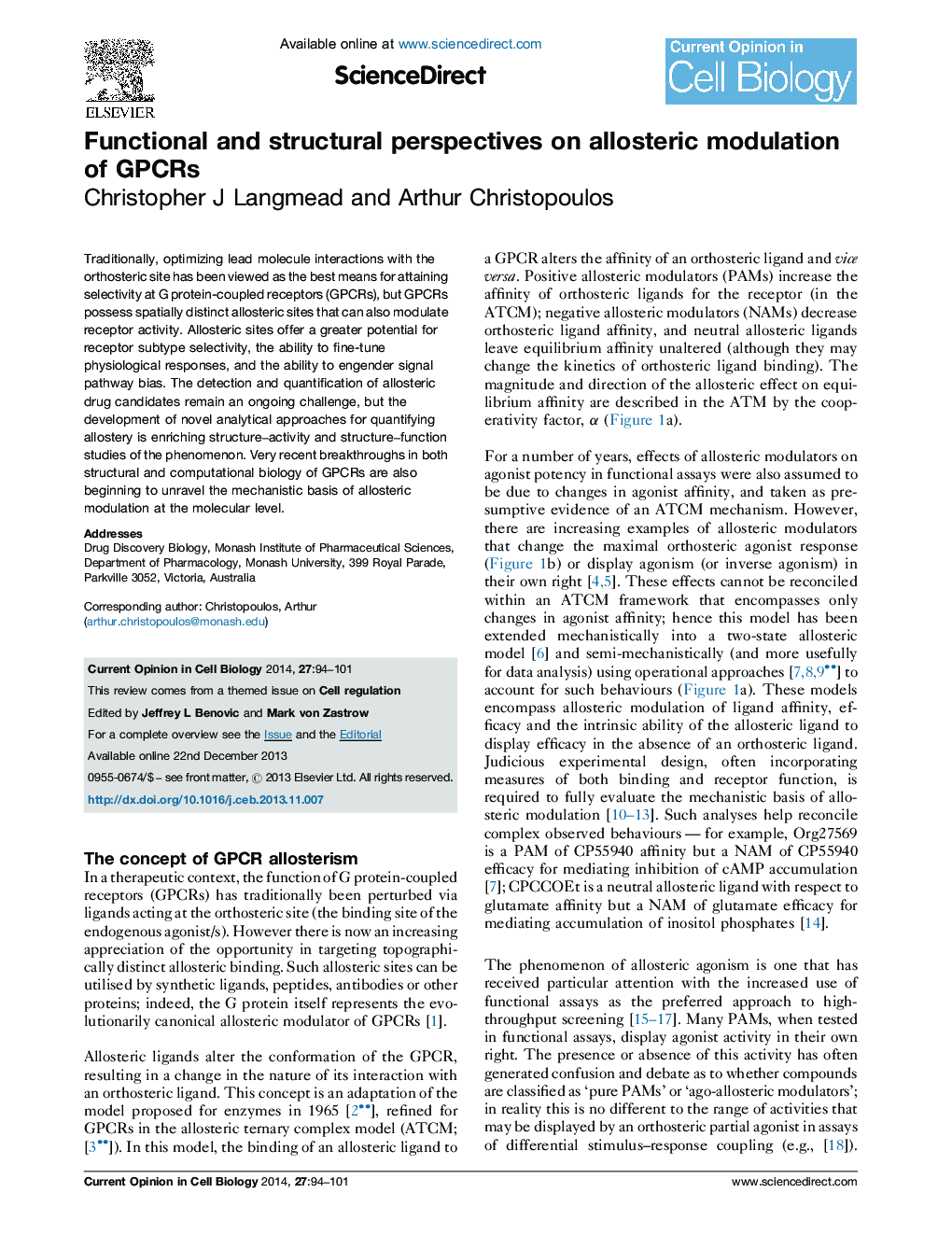| Article ID | Journal | Published Year | Pages | File Type |
|---|---|---|---|---|
| 8466003 | Current Opinion in Cell Biology | 2014 | 8 Pages |
Abstract
Traditionally, optimizing lead molecule interactions with the orthosteric site has been viewed as the best means for attaining selectivity at G protein-coupled receptors (GPCRs), but GPCRs possess spatially distinct allosteric sites that can also modulate receptor activity. Allosteric sites offer a greater potential for receptor subtype selectivity, the ability to fine-tune physiological responses, and the ability to engender signal pathway bias. The detection and quantification of allosteric drug candidates remain an ongoing challenge, but the development of novel analytical approaches for quantifying allostery is enriching structure-activity and structure-function studies of the phenomenon. Very recent breakthroughs in both structural and computational biology of GPCRs are also beginning to unravel the mechanistic basis of allosteric modulation at the molecular level.
Related Topics
Life Sciences
Biochemistry, Genetics and Molecular Biology
Cell Biology
Authors
Christopher J Langmead, Arthur Christopoulos,
